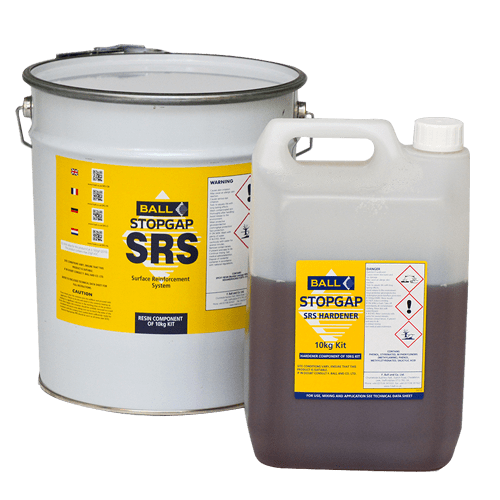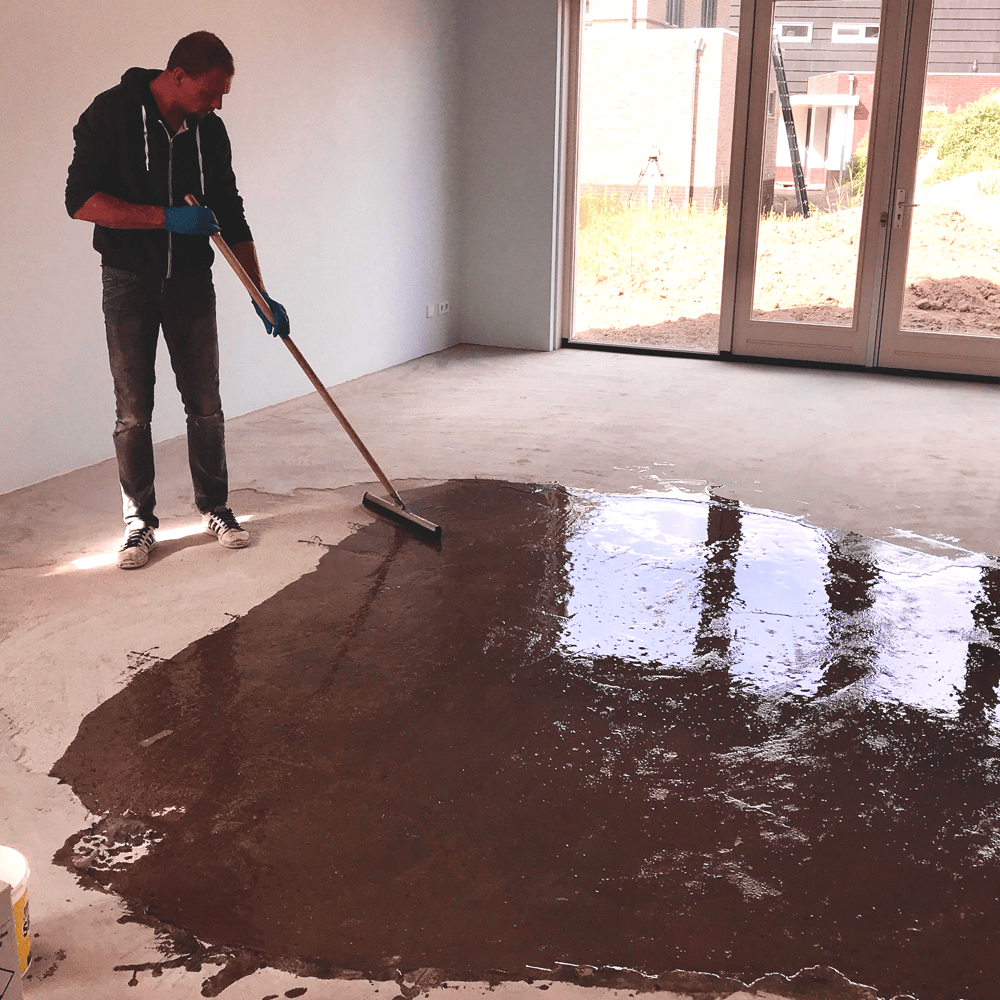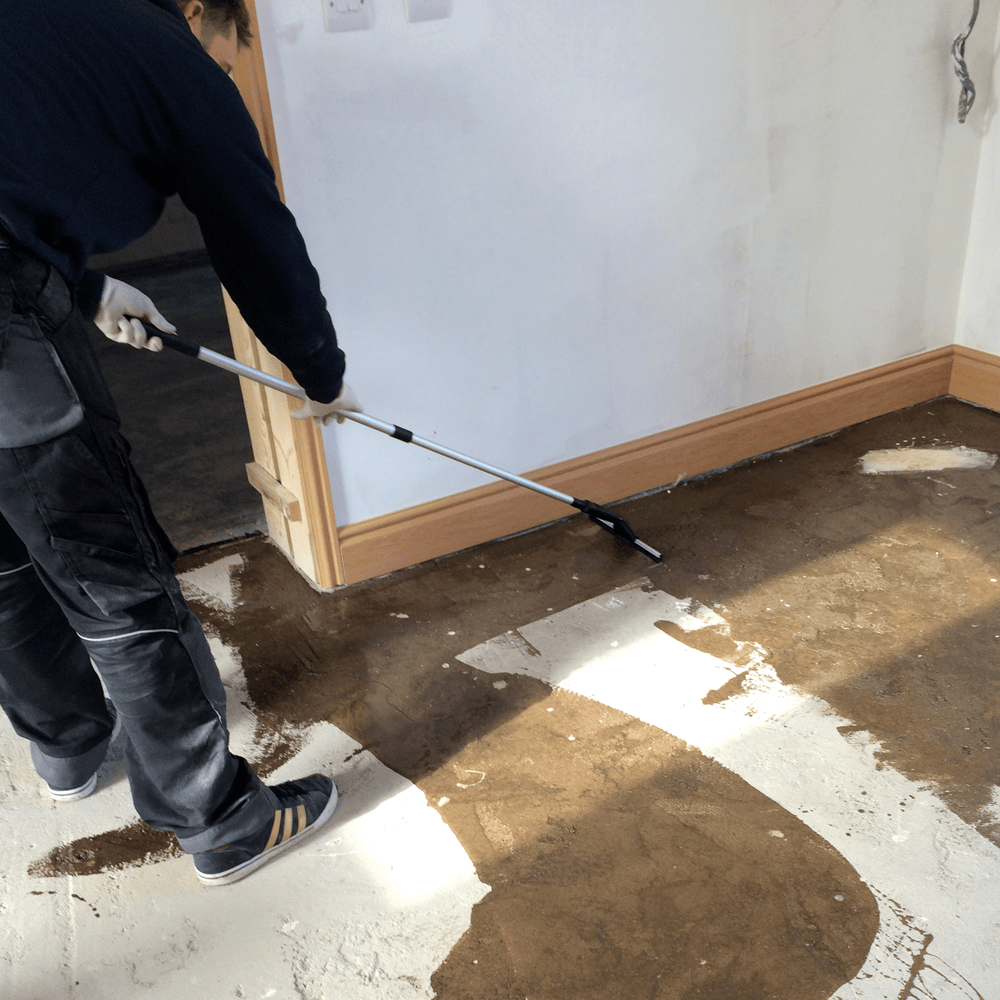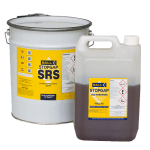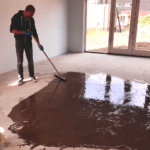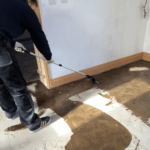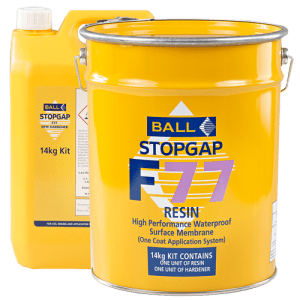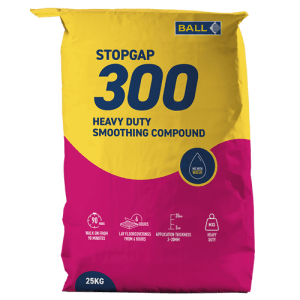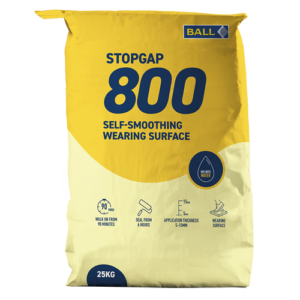Primers
Stopgap SRS
Surface Reinforcement System
STOPGAP SRS is a solvent free, low viscosity, two component, epoxy resin surface reinforcement system designed to quickly stabilise and reinforce poor and weak sand/cement or calcium sulphate screeds. This includes those containing hot water heating pipes.
The product readily fills voids and cracks, and binds loose particles resulting from poor installation and curing techniques of screeds.
Our surface reinforcement system can rapidly reinforce weak and friable screeds overnight with minimal disruption, creating a suitable base for the receipt of other subfloor preparation products. It can negate the need to remove and replace poorly compacted or weak screeds. This can be costly and time consuming, especially if the subfloor contains underfloor heating. Therefore it minimises disruption in the construction process.
Our SRS has a quick working time of 30 minutes when applied to the subfloor at 20°C, reducing installation downtime.
STOPGAP SRS is suitable for use with standard underfloor heating systems, making it an ideal choice for new builds and modern renovation projects. It has a shelf life of 24 months in unopened containers stored in good conditions. This makes it a reliable choice for both current and future projects.
Learn more about how to use STOPGAP SRS in our F-Talk article here.
- Penetrates and reinforces weak and friable screeds
- Minimal disruption
- Restore screeds overnight
- Suitable with underfloor heating systems
-

ISO 9001
-

ISO 14001
-

ISO 45001
STOPGAP SRS is a solvent free, low viscosity, two component, epoxy resin surface reinforcement system designed to quickly stabilise and reinforce poor and weak sand/cement or calcium sulphate screeds. This includes those containing hot water heating pipes.
The product readily fills voids and cracks, and binds loose particles resulting from poor installation and curing techniques of screeds.
Our surface reinforcement system can rapidly reinforce weak and friable screeds overnight with minimal disruption, creating a suitable base for the receipt of other subfloor preparation products. It can negate the need to remove and replace poorly compacted or weak screeds. This can be costly and time consuming, especially if the subfloor contains underfloor heating. Therefore it minimises disruption in the construction process.
Our SRS has a quick working time of 30 minutes when applied to the subfloor at 20°C, reducing installation downtime.
STOPGAP SRS is suitable for use with standard underfloor heating systems, making it an ideal choice for new builds and modern renovation projects. It has a shelf life of 24 months in unopened containers stored in good conditions. This makes it a reliable choice for both current and future projects.
Learn more about how to use STOPGAP SRS in our F-Talk article here.
- Penetrates and reinforces weak and friable screeds
- Minimal disruption
- Restore screeds overnight
- Suitable with underfloor heating systems
-

ISO 9001
-

ISO 14001
-

ISO 45001
Stopgap SRS Overview Data sheets and Downloads
STOPGAP SRS APPLICATIONS
STOPGAP SRS, in most applications, can negate the need to remove and replace poorly compacted or weak screeds which can be costly and time consuming, especially if the subfloor contains underfloor heating, thereby minimising disruption in the construction programme. The product may also be used over certain screeds containing high levels of construction moisture or where no effective damp proof membrane is present, prior to the application of STOPGAP F77 Waterproof Surface Membrane (Protocols for the use of STOPGAP F77 must be observed).</p>
An assessment should be made of the screed in question to determine the likelihood of success, as these instructions are for guidance purposes only and may contain information that may be inappropriate for certain sites. Specific information and testing requirements are available upon request from the Technical Service Department.

Need help?
Should you require further information or advice regarding any F. Ball products, please contact the F. Ball technical service team on +44(0)1538 361633 or by e-mail: technical@f-ball.co.uk For the latest information on adhesive recommendations, please refer to the F. Ball Recommended Adhesives Guide
